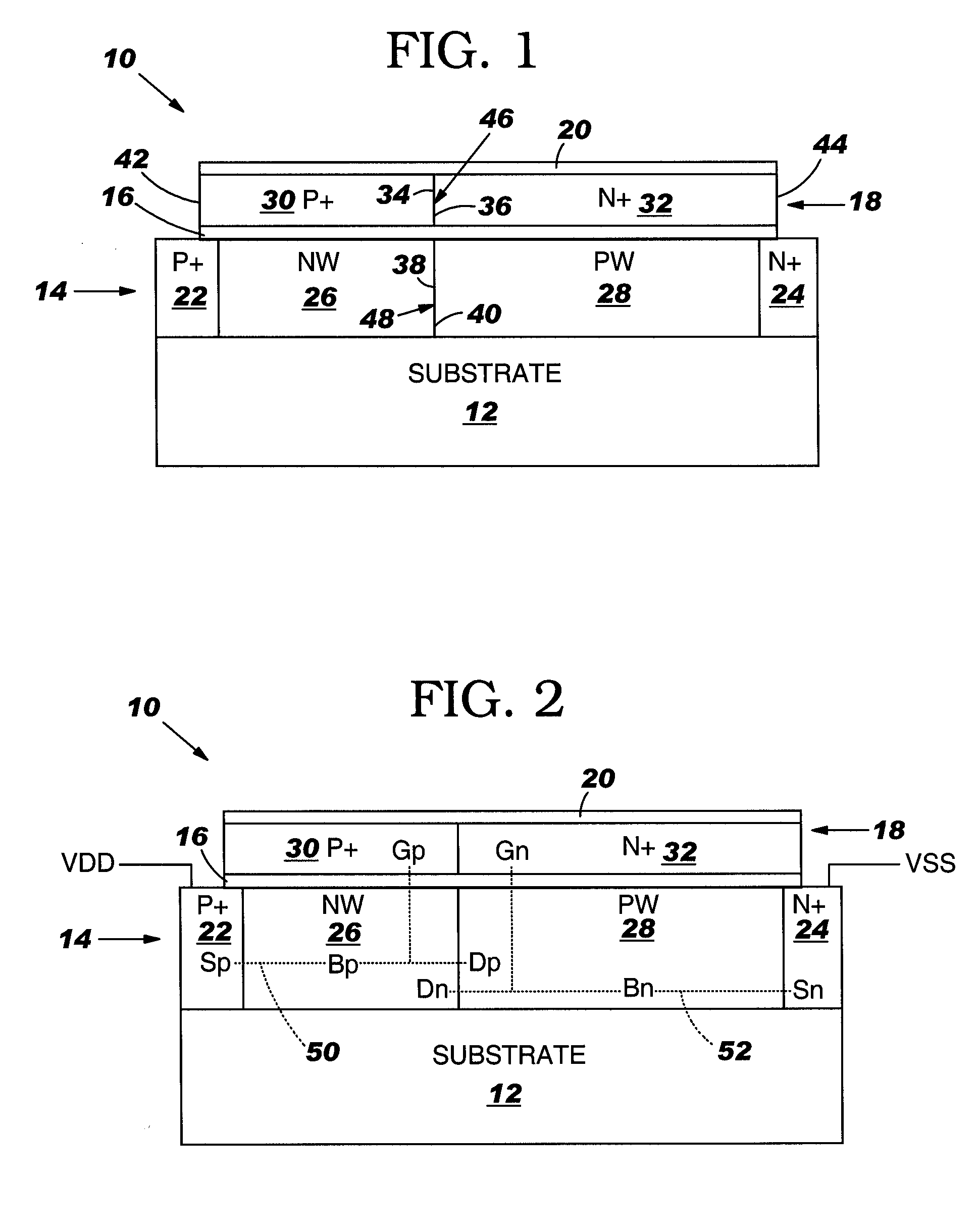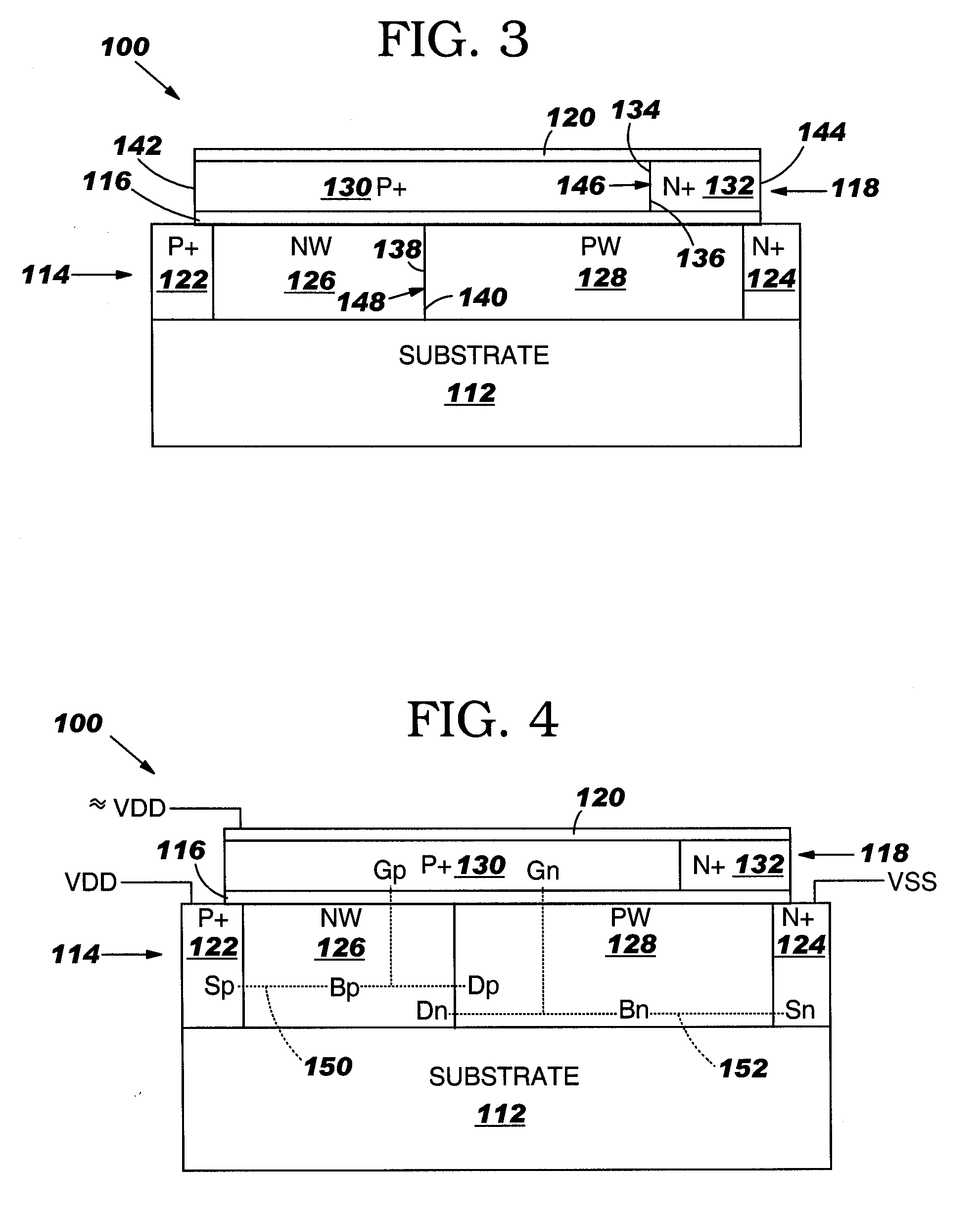Silicon-on-insulator latch-up pulse-radiation detector
a technology of latching and radiation detector, which is applied in the direction of radiation intensity measurement, instruments, x/gamma/cosmic radiation measurement, etc., can solve the problems of unsuitable design for radiation detector use, and difficulty in producing a soi radiation detector in which ionizing radiation-triggered latching can occur
- Summary
- Abstract
- Description
- Claims
- Application Information
AI Technical Summary
Problems solved by technology
Method used
Image
Examples
Embodiment Construction
[0023] A first embodiment of an SOI radiation detector in accordance with the present invention, formed as a PNPN diode structure 100, is illustrated in FIG. 3. The PNPN diode structure 100 shown in FIG. 3 comprises an insulating substrate 112, a silicon layer 114 formed on the insulating substrate 112, a gate oxide layer 116 formed on the silicon layer 114, a gate layer 118 formed on the gate oxide layer 116, and a silicide strap 120 formed over the gate layer 118. The silicon layer 114 includes a heavily doped P+region 122, a heavily doped N+region 124, a lightly-doped N-well 126, and a lightly doped P-well 128. The gate layer 118 includes a heavily doped P+region 130 and a heavily doped N+region 132 tied together by the silicide strap 120. The PNPN diode structure 100 can be formed using conventional SOI processes known to those skilled in the art.
[0024] As detailed above, in the PNPN diode structure 10 shown in FIG. 1, the interface 46 between the P+region 30 and the N+region 3...
PUM
 Login to View More
Login to View More Abstract
Description
Claims
Application Information
 Login to View More
Login to View More - R&D
- Intellectual Property
- Life Sciences
- Materials
- Tech Scout
- Unparalleled Data Quality
- Higher Quality Content
- 60% Fewer Hallucinations
Browse by: Latest US Patents, China's latest patents, Technical Efficacy Thesaurus, Application Domain, Technology Topic, Popular Technical Reports.
© 2025 PatSnap. All rights reserved.Legal|Privacy policy|Modern Slavery Act Transparency Statement|Sitemap|About US| Contact US: help@patsnap.com



